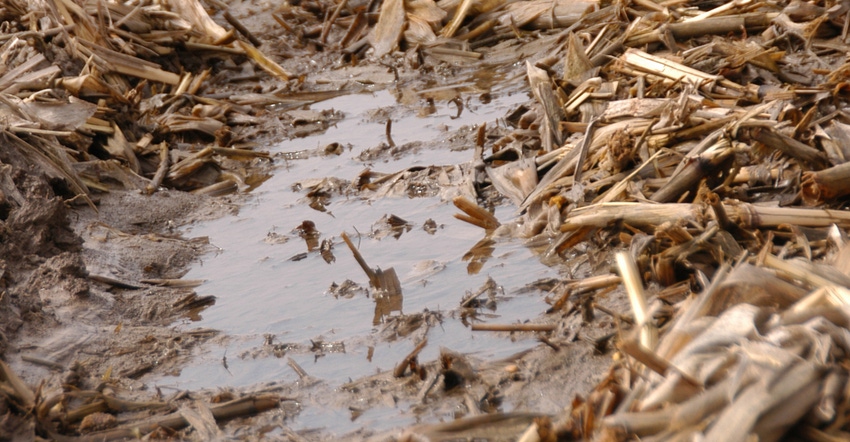
The long, wet fall of 2018 meant many farmers throughout Kansas and the Midwest did not get the nitrogen they would normally apply on the ground, and weather conditions this spring haven’t been cooperative in helping them catch up on those applications.
“We are about 65% behind where we’d normally see at this time (late March) for applied nitrogen,” says Kent Nichols, agronomy field sales manager for Kansas ag retailer MKC. “I know farmers are concerned with getting their nitrogen on before planting, and the weather is certainly not cooperating.”
While acknowledging that farmers are becoming anxious, Nichols says he is urging his customers to be patient and not try to rush applications.
“It is still pretty cool and its very wet,” he says. “If you have some soils that are a bit lighter and sandier, you might be able to get in the field earlier than on some of our heavier, clay soils. Those fields just need to wait.”
Barring more heavy rains, Kansas farmers will be able to get into the fields soon to get burndown done and anhydrous applied. Brook Mitchell, commercial agronomist with Mycogen Seeds, says anhydrous is the best choice for dryland because dry fertilizers require moisture to get into the soil and there is never a way to be sure that it will be there at the right time.
However, he says there are options for getting down the nitrogen that corn plants will need to get up and growing.
“You have to have some N out there up front, but you don’t need a whole season’s worth,” Mitchell says. “It only takes about a third of the full amount of nitrogen needed to get the plant up to V5 or V6. Farmers can put that down with planting. Then they can come back in to side-dress to add what’s needed between then and tassel.”
Nichols says he expects to see farmers who can start working fields in April going ahead with anhydrous applications if they have a long enough window to wait a week or so after application before planting. For those who don’t have that window, applying liquid themselves is an option and so is adjusting starter fertilizer in the planter to meet the crop’s early needs and then coming back over the top with another application.
He says economics will also play a role in this year’s planting season.
“Ammonia went up quite a bit in retail price and the other forms of nitrogen are all higher,” Nichols says. “A lot of our customers strip till and are looking at a larger investment. Economics is important, but you want to do what you can to get the best results.”
He says he anticipates the usual stress finding enough people and enough equipment to meet the demand, especially if corn and soybean planting get tightly spaced.
“Still, I would continue to emphasize that all in all, the process we have in place is pretty efficient and we can get a lot done in a short time frame,” Nichols says. “We still have plenty of time to get planting done. We can plant pretty well into May and still expect good performance. The last thing we want is to see people mucking that seed into the furrow and creating sidewall compaction if the soil is too wet.”
It also needs to get quite a bit warmer before the soil is warm enough for corn to germinate.
“Ideally, we want 55 degrees or above for soil temperature,” Nichols says. “As of March 25, the temperature is still in the low 40s. We have easily another month. Patience will really be key this season.”
About the Author(s)
You May Also Like






